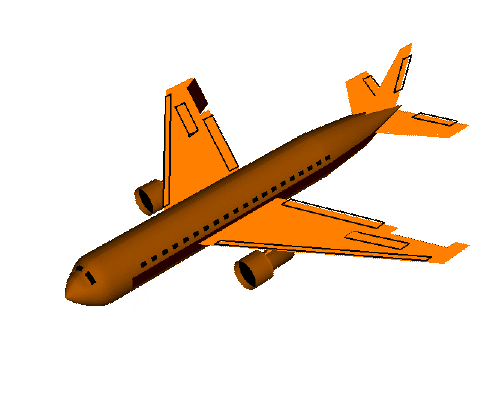Aerodynamics is the study of forces and the resulting motion of objects through the air.
Studying the motion of air around an object allows us to measure the forces of lift, which allows an aircraft to overcome gravity, and drag, which is the resistance an aircraft “feels” as it moves through the air. Everything moving through the air (including airplanes, rockets, and birds) is affected by aerodynamics.
In this section, we will explore how lift and drag work at both subsonic speeds—slower than the speed of sound—and, later, at supersonic speeds—faster than the speed of sound.
Welcome to the Beginner's Guide to Aerodynamics | ||||
 | ||||
| What is aerodynamics? The word comes from two Greek words: aerios, concerning the air, anddynamis, which means force. Aerodynamics is the study of forces and the resulting motion of objects through the air. Judging from the story of Daedalus and Icarus, humans have been interested in aerodynamics and flying for thousands of years, although flying in a heavier-than-air machine has been possible only in the last hundred years. Aerodynamics affects the motion of a large airliner,a model rocket, a beach ball thrown near the shore, or a kite flying high overhead. The curveball thrown by big league baseball pitchers gets its curve from aerodynamics. | ||||
At this Web site you can study aerodynamics at your own pace and to your own level of interest. Some of the topics included are: Newton's basic equations of motion; the motion of a free falling object, that neglects the effects of aerodynamics; the terminal velocity of a falling object subject to both weight and air resistance; the three forces (lift, drag, and weight) that act on a glider; and finally, the four forces that act on a powered airplane. Because aerodynamics involves both the motion of the object and the reaction of the air, there are several pages devoted to basic gas properties and how those properties change through the atmosphere. This site was created at NASA Glenn as part of the Learning Technologies Project (LTP). It is currently supported by theAeronautics Research Mission Directorate at NASA HQ through the Educational Programs Office at NASA Glenn. The purpose for this web site is to provide background information on basic aerodynamics as teaching aids for math and science teachers. Some of the slides were prepared to support FoilSim, an interactive educational computer program that allows students to design and test airfoil shapes on a personal computer. Other slides were prepared to support the Digital Learning Network (DLN) videoconferencing workshops for teachers and students. The slides were collected into Power Point Presentations which are made available to teachers and students. There is a special section of the Beginner's Guide which deals with compressible, or high speed, aerodynamics. This section is intended for undergraduates who are studying shock waves or isentropic flows and contains several calculators and simulators for that flow regime. This site has been intentionally organized to mirror the unstructured nature of the world wide web. There are many pages here connected to one another through hyperlinks and you can then navigate through the links based on your own interest and inquiry. There is an Aerodynamics Index of topics that you can access from any page, so you are never more than two clicks away from any other Web page at this site. However, if you prefer a more structured approach, you can also take one of our Guided Tours through the site. Each tour pro | ||||
No comments:
Post a Comment